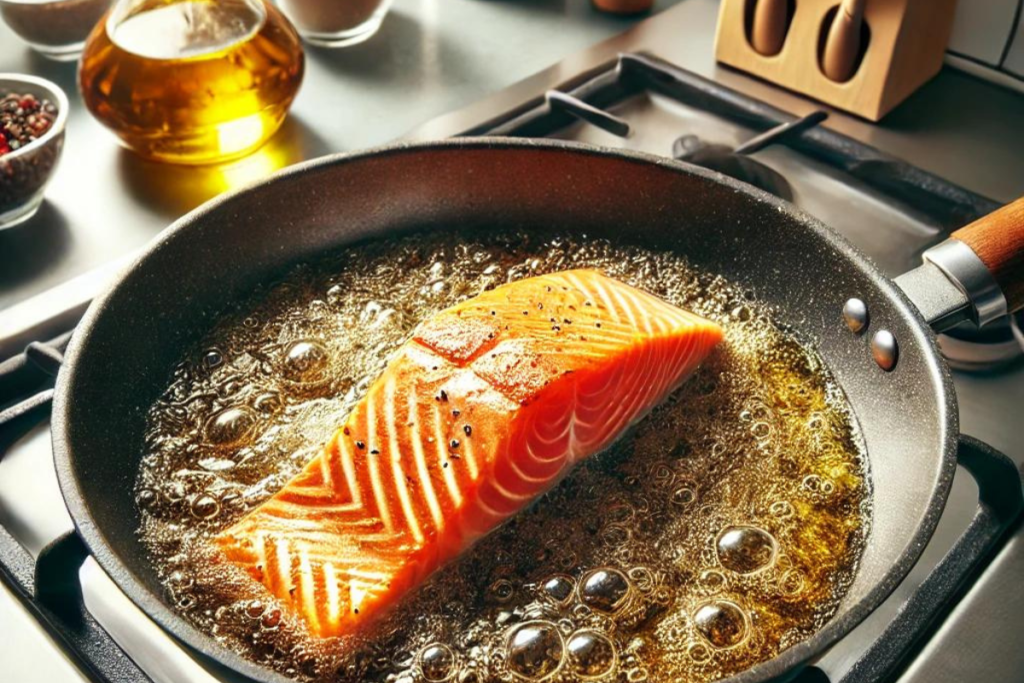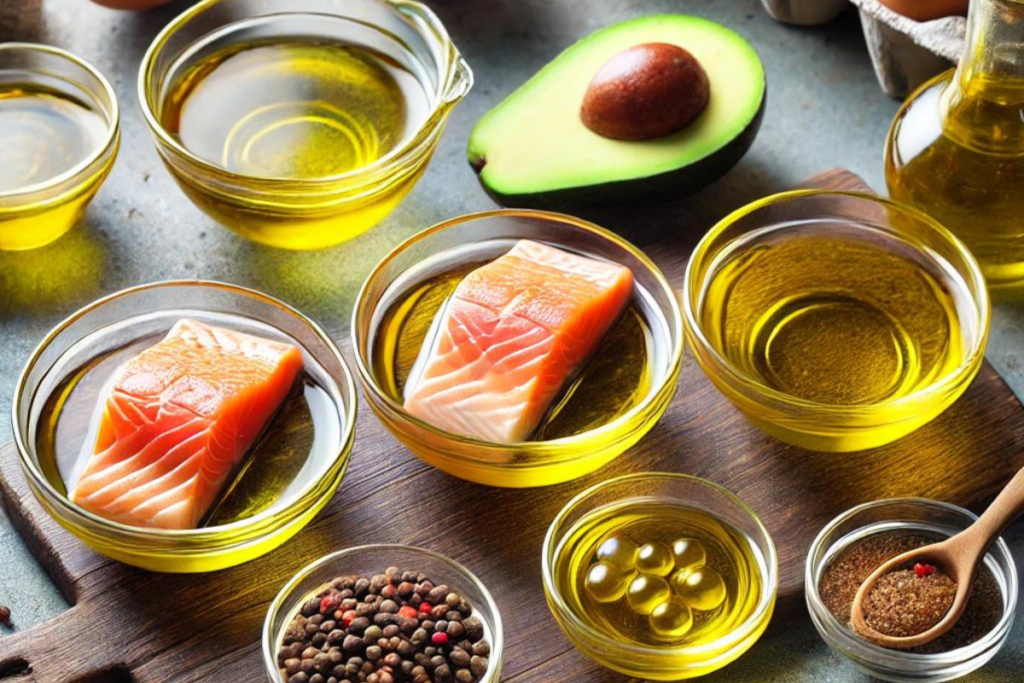Salmon is widely known as one of the healthiest types of fish you can eat, but is it healthy to fry salmon? It’s rich in omega-3 fatty acids, protein, and essential vitamins, but the method of cooking can affect its nutritional benefits. Many people wonder, is it healthy to fry salmon, and how frying impacts its nutrients. This article will explore whether frying salmon is a healthy option, the best oils to use, and tips on how to keep it nutritious. So, let’s dive in and answer the question: Is it healthy to fry salmon?
The Nutritional Power of Salmon
Undoubtedly, salmon offers numerous health benefits. First and foremost, it is packed with:
- Omega-3 Fatty Acids: These healthy fats are essential for heart and brain health, and salmon is one of the best sources of eicosapentaenoic acid (EPA) and docosahexaenoic acid (DHA).
- Protein: Salmon is a great source of high-quality protein, which is crucial for muscle repair and overall bodily functions.
- Vitamins and Minerals: It contains vitamin D, vitamin B12, potassium, and magnesium, all of which are important for various bodily processes.
However, the way you cook salmon can significantly affect its nutritional profile. For example, frying, if done correctly, doesn’t have to detract from the health benefits. Using the right oils, such as olive oil or avocado oil, can preserve much of the nutritional value. To learn more about the benefits of using healthy oils, you can read this comparison of olive oil and avocado oil.
Does Frying Impact Salmon’s Health Benefits?

When frying salmon, some changes in its nutritional value can occur. Nevertheless, if done properly, the impact is minimal.
- Omega-3 Retention: Frying at extremely high temperatures can reduce omega-3 content. However, using moderate heat and oils with high smoke points, like olive oil or avocado oil, helps minimize the loss of these essential fats.
- Loss of Vitamins: Frying can lead to a reduction in water-soluble vitamins, such as vitamin B, but fat-soluble vitamins like vitamin D remain largely intact.
- Avoiding Harmful Compounds: Cooking at very high temperatures can produce harmful free radicals, especially if the wrong oils are used. Therefore, it’s better to choose oils with higher smoke points to prevent this. For further details on safe cooking temperatures, check the USDA guide on safe cooking temperatures for fish.
Thus, by controlling the heat and using the right oils, you can keep fried salmon nutritious.
Best Oils for Frying Salmon

Choosing the correct oil is essential for healthy frying. Importantly, oils with high smoke points are the best choices for frying salmon. Here are some options:
- Olive Oil: A healthy choice, olive oil has a high smoke point and contains heart-healthy monounsaturated fats.
- Avocado Oil: This oil is even better for frying at high heat due to its very high smoke point.
- Canola Oil: Another good option, canola oil has a neutral flavor and is low in unhealthy fats.
It’s advisable to avoid oils like vegetable oil and corn oil, as they can degrade quickly at high temperatures, releasing harmful compounds.
Best Practices for Frying Salmon
To ensure you’re making the most of your salmon, follow these best practices:
- Use Minimal Oil: Fry with only a thin layer of oil, which allows the salmon to get crispy without adding unnecessary fat.
- Control the Heat: Fry at a moderate temperature to avoid oil degradation and nutrient loss.
- Avoid Overcooking: Overcooked salmon becomes dry and loses some of its nutritional benefits. Keep an eye on the texture to ensure it’s perfectly cooked.
For a flavorful and crispy result, you might enjoy trying this recipe for crispy-skin salmon, which adds extra flavor while keeping it healthy.
Healthier Alternatives to Frying
Although frying can be done healthily, other methods can offer even better nutrient retention. Consider these alternatives:
- Grilling: Grilling requires little to no oil and helps retain more nutrients.
- Baking: Baking salmon allows it to cook evenly without added fats, which helps preserve its natural nutrients.
- Steaming: Steaming is one of the healthiest ways to cook salmon since it involves no oil and maintains all the fish’s nutritional content.
Additionally, steaming salmon in parchment paper (known as en papillote) locks in flavor and moisture without needing oil. This technique provides a healthy yet delicious alternative to frying.
FAQs
1. Is frying salmon unhealthy?
Not necessarily. When using the right oils and frying at moderate temperatures, fried salmon can retain much of its nutritional value. The key is to avoid deep frying and stick to healthier oils like olive oil or avocado oil.
2. What is the healthiest way to cook salmon?
Grilling, baking, or steaming salmon are some of the healthiest methods. These techniques require less oil and help preserve the fish’s vitamins and omega-3 fatty acids.
3. Does frying reduce the omega-3 content of salmon?
Yes, frying at very high temperatures can reduce the omega-3 content. However, by frying at moderate heat and using oils with high smoke points, such as avocado oil, you can retain most of the omega-3 fatty acids.
4. What’s the best oil to fry salmon in?
Oils with high smoke points, such as olive oil or avocado oil, are the best options for frying salmon because they can withstand high heat without breaking down into harmful compounds.
Frying salmon can indeed be a healthy cooking method, provided that you use the right techniques. By opting for healthier oils, controlling the temperature, and not overcooking the fish, you can enjoy the rich, crispy texture of fried salmon while maintaining its nutritional benefits. That being said, alternative methods like grilling, baking, or steaming can offer even healthier results. For more salmon cooking ideas, check out this fried salmon bites recipe.
Therefore, with careful preparation, fried salmon can be a delicious and nutritious addition to your diet!
